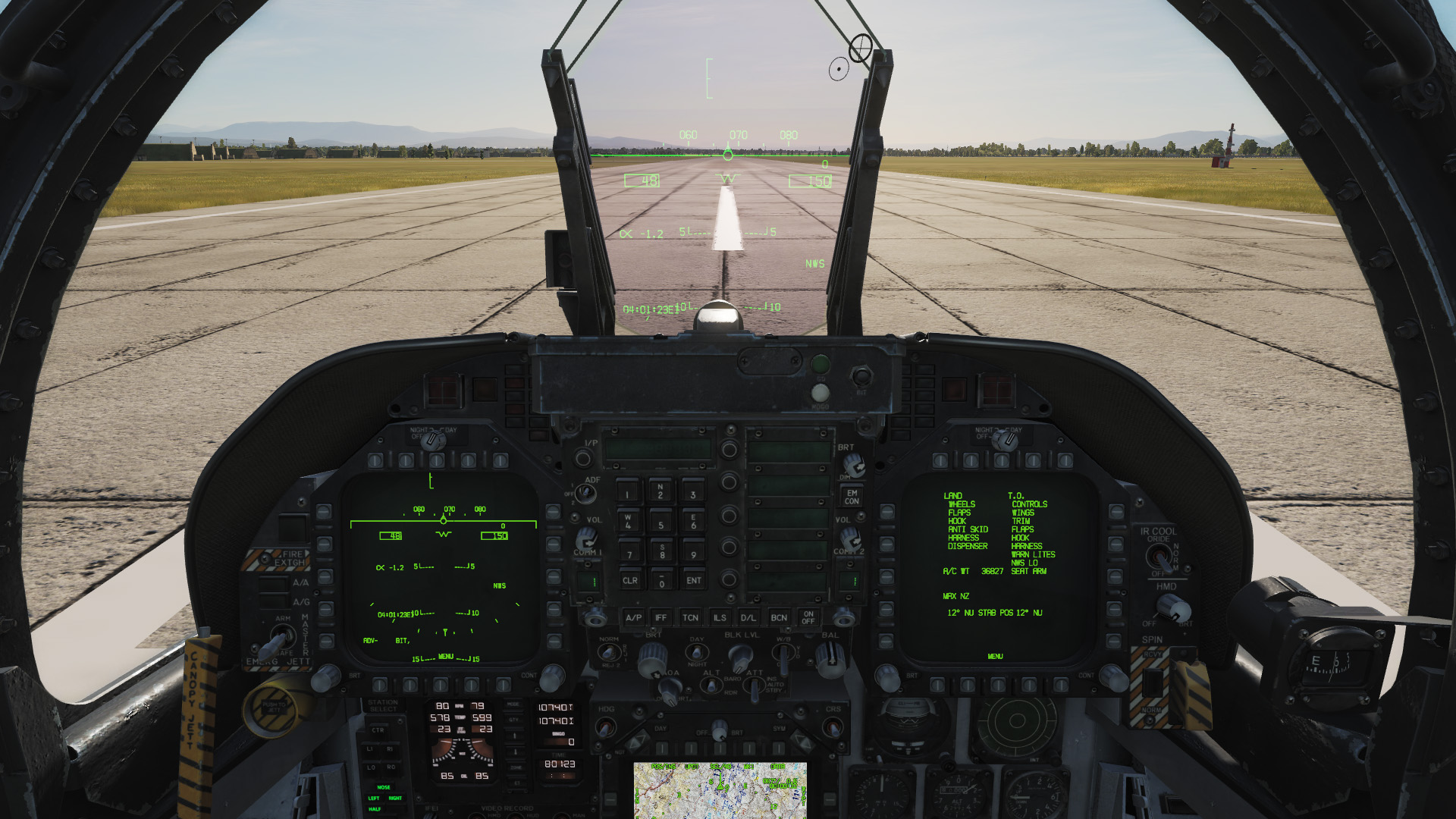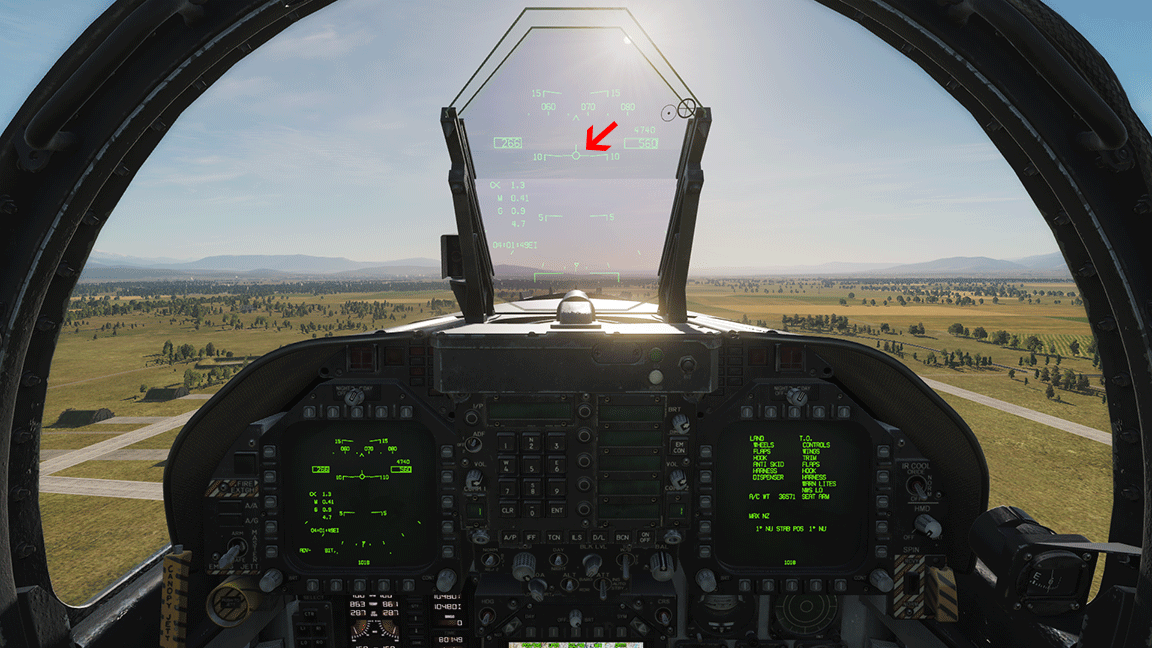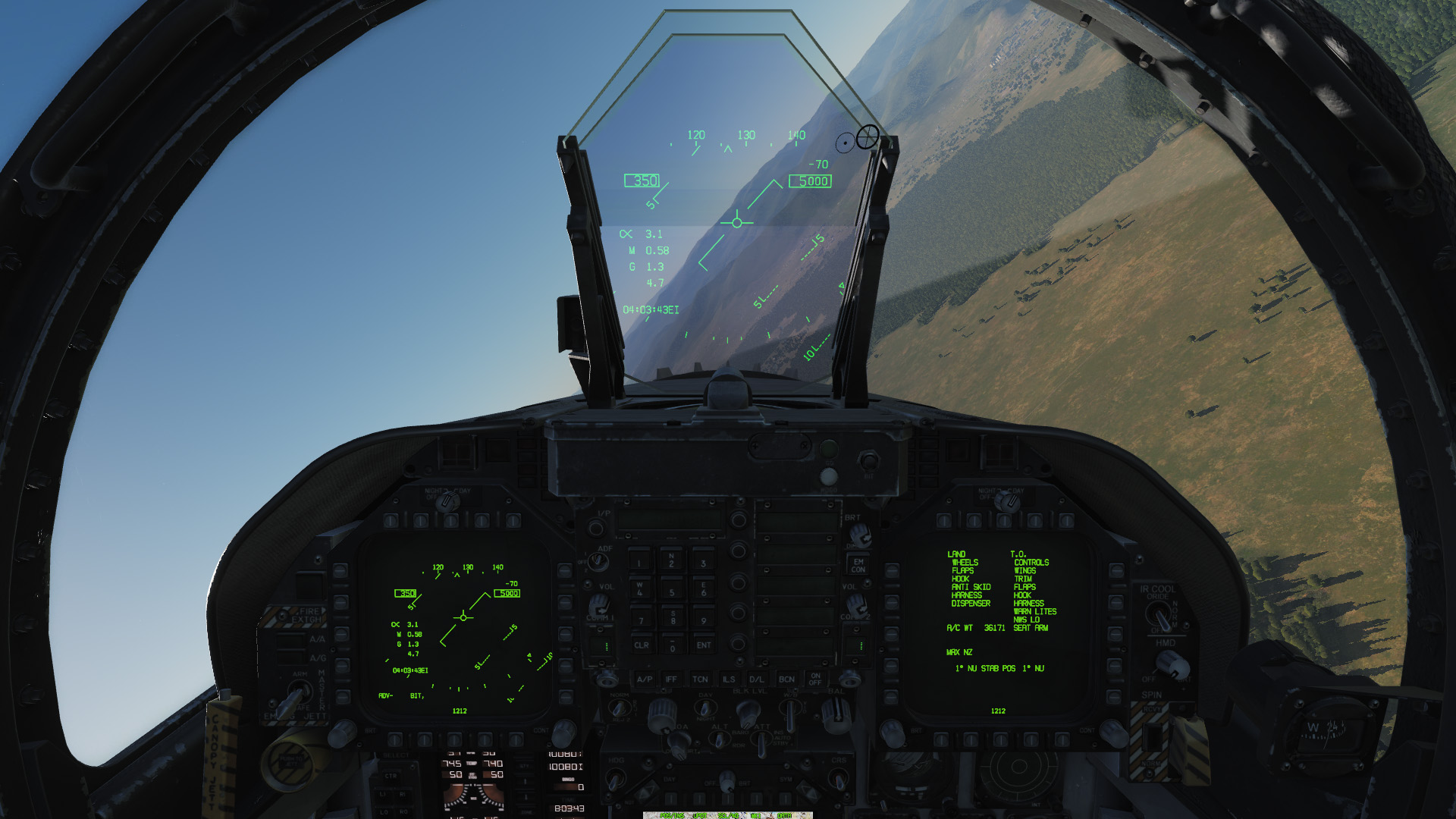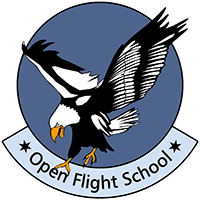Simplified Procedures in Detail
6. Standard Take-off and Climb
You can do this exercise with the mission Engine start and taxiing. Then you have to follow all steps of the previous chapters. Or, you start the exercise mission Take-off and free flight. Here you are already on the runway and all systems are activated. This helps if you want to practice the launch several times in a row.
Since we already have the take-off clearance and you are blocking the runway, we should hurry up and continue.
The starting procedure is as follows:
-
Apply the wheel brakes W(Hold BRAKE).
- Thrust to 80% RPM (ENG RPM 80%).
The nose of the airplane sinks slightly.
-
Briefly check the IFEI for any unusual values (Check IFEI)

-
When all values are "In The Green" (correct) range, release the brakes (Release BRAKE) W.
-
Increase to 100% thrust including afterburner (RPM 100%).
- Control any yaw of the aeroplane with the nose wheel control of the pedals, the keys Y and X or better with your joystick twist or rudder pedals. Be careful and make only small steering inputs.
-
In our training mission, the F/A-18C is light, as there are no weapons are attached. Therefore it will take off by itself at about 150 knots (Rotate).
-
If the aeroplane is heavier loaded, carefully pull back the control stick at 150 knots. The nose of the aeroplane should point 6° - 8° upwards. Hold this position until you are completely lifted off.

-
Once you are in the air and climbing, retract the landing gear LCtrl + G, before you reach 250 knots (GEAR UP).
-
Gear Limiting Speed = 250 Kts
-
Set the landing flaps to "automatic" F (FLAPS AUTO).
-
If you are online with others, report "<Callsign> Airborne" in the radio.
-
Climb at 10° (align flight path display with the 10° marker) and continue to accelerate up to 350 knots.

-
Just before reaching 5,000 feet, ease the stick forward to lower the nose.
- Aligning the flight path indicator with the 0° line to hold the 5,000 feet by . Reduce thrust to avoid speeding up and maintain 350 knots.

-
Fly straight for a while.
-
Now try to fly a right turn while maintaining speed and altitude. To do this, turn the plane to the right and pull the stick slightly. Note that the air resistance during manoeuvring will increase and you will have to use more thrust so as not slow down. Keep the flight path display on the 0° line

-
Now you can get used to the flight characteristics of the F/A-18C. Fly around a bit and experiment with the flight characteristics. Fly slow and fast manoeuvres with high and low angles of attack. Also try to fly very slowly and see how the plane reacts in turns. If you are overdoing it, it should be mentioned that you can eject with 3 x Ctrl + E

